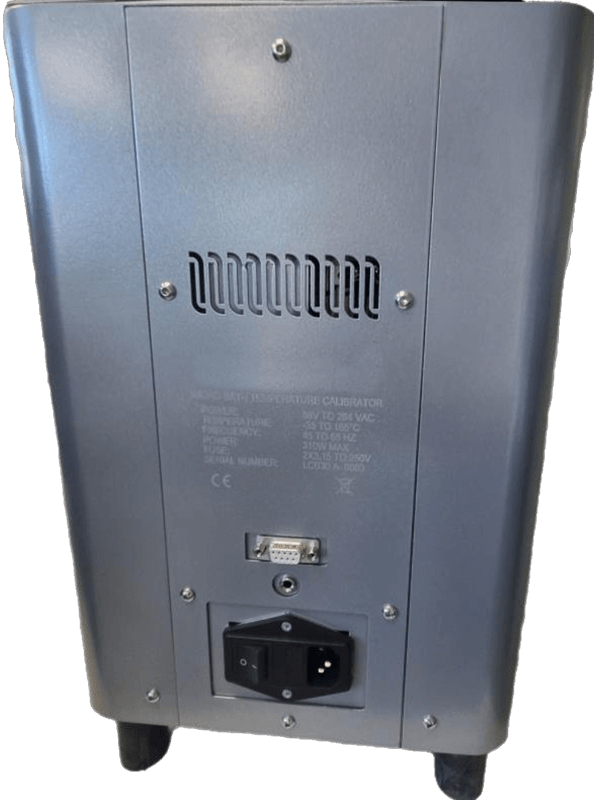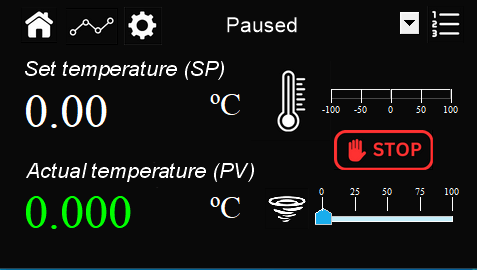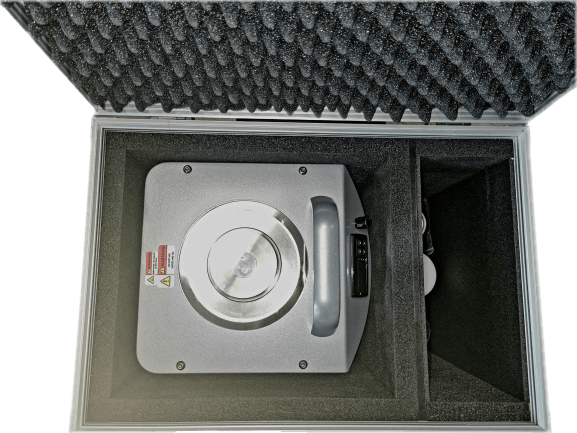LR-Cal LTC 150-F-PLUS
Portable temperature micro bath
-40...+160°C
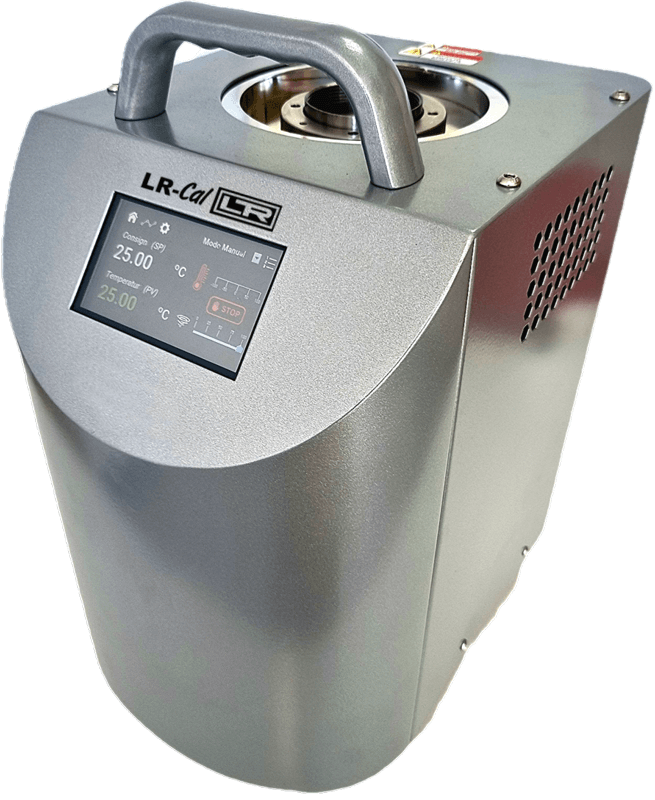

- Portable, operation via touch screen
- Temperature range -40°C...+160°C
- Accuracy ±0.1°C, stability ±0.01°C
- Calibration bath volume 0.7 liter
- (60 mm diameter, 195 mm immersion depth)
- Option: exchangeable calibration bath inserts (thus easier change of operating liquid for different temperatures)
Description
LR-Cal LTC 150-F-PLUS description
The LR-Cal LTC 150-F-PLUS portable temperature calibration bath serves as a temperature source and reference instrument in one, for testing and calibrating all types of temperature measurement devices. Calibration bath inserts (simplifies silicone oil change) and various metal block inserts are also available.
- Optimal for calibration of glass thermometers and laboratory thermometers as well as temperature sensors with not exactly cylindrical shape
- Optional calibration bath inserts simplify (temperature-related) operating liquid changes
- Trend graphs, resolution up to 0.1°C, adjustable period of time
- Color 4.3" touch screen, very easy operation
- Calibration bath immersion depth 190 mm, tank diameter 60 mm (0.7 liter volume)
- Accuracy 0.1°C, temperature stability ±0.01°C, temperature uniformity ±0.03°C
- RS485 ModBus RTU communication
- Homogeneous temperature distribution, in calibration bath application by via touch-screen controllable magnetic mixer
Specification
LR-Cal LTC 150-F-PLUS specification
| Description: | Data: | |
|---|---|---|
| Temperature range (at +20°C ambient temperature) | -40°C...+165°C (-40°F...+329°F) (minimum temperature is 60°C below ambient; absolute minimum is -40°C) |
|
| Temperature indication | Accuracy ±0.1°C Resolution 0.001°/0.01°/0.1° (°C or °F) |
|
| Stability of the regulated temperature | ±0.01°C | |
| Heating | approx. 15 minutes from -5°C to +100°C (23°F to 212°F) | |
| Cooling | approx. 20 minutes from +25°C to -25°C (77°F to -13°F) | |
| Temperature uniformity | ±0.03°C | |
| Operation fluid | Silicone oil AC 05 or AC 10 (not included in standard delivery) | |
| Tank diameter / insertion depth | 60 mm diameter, 190 mm depth | |
| Power supply | 115...230 VAC 50/60 Hz | |
| Power consumption | max. 310 W | |
| Interface | RS485 ModBus RTU | |
| Tank material | Aluminium | |
| Tank volume | approx. 700 cm³ | |
| Housing material | Metal | |
| Weight | approx. 12.8 kgs | |
| Dimension | 250 x 370 x 440 mm | |
| Selectable operating languages | German, English, French, Spanish, Italian | |
| Display | 4.3 inch touch-screen, color | |
The stated accuracies are valid at ambient temperature +10...+40°C and are guaranteed for one year.
Warranty: 3 years warranty against manufacturing defects.
Scope of standard supply
LR-Cal LTC 150-F-PLUS scope of standard supply
- Temperature calibration micro bath LR-Cal LTC 150-F-PLUS
- Calibration container lid with 5+1 holes
- Power supply cable
- Factory calibration certificate
- Operating manual DE+EN
LR-Cal LTC 150-F-PLUS Options + other accessories
DAkkS calibration certificate
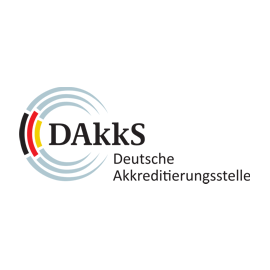
Option:
DAkkS calibration certificate
(instead of factory certificate)
Trolley case
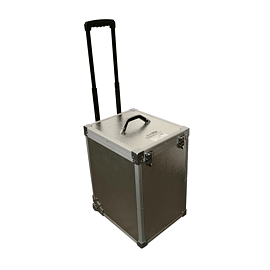
Accessory:
Sturdy trolley case with wheels and extendable handle
Silicone oil AC 05
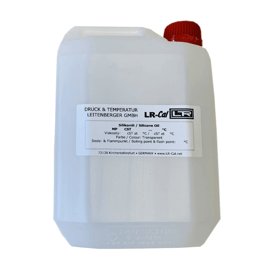
Accessory:
1 liter bottle with calibration medium
Silicone oil AC 05
Working range -40...+125°C
Flash point 142°C
Viscosity at 25°C: 5 cSt
Viscosity at 60°C: 6 cSt
Thermal
conductivity: 0.140 W/m K
Heat capacity: 1,5 KJ/kg K
Specific gravity: 0.94
Silicone oil AC 10

Accessory:
1 liter bottle with calibration medium
Silicone oil AC 10
Working range -30...+160°C
Flash point 170°C
Viscosity at 25°C: 10 cSt
Viscosity at 60°C: 6 cSt
Thermal
conductivity: 0.140 W/m K
Heat capacity: 1,5 KJ/kg K
Specific gravity: 0.94
Silicone oil AC 20

Accessory:
1 liter bottle with calibration medium
Silicone oil AC 20
Working range -20...+200°C
Flash point 240°C
Viscosity at 25°C: 20 cSt
Viscosity at 60°C: 12 cSt
Thermal
conductivity: 0.140 W/m K
Heat capacity: 1,5 KJ/kg K
Specific gravity: 0.95
Container insulation cover
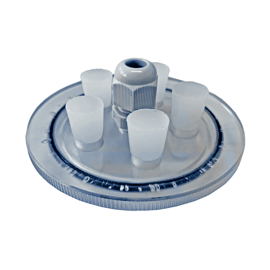
Spare part:
Calibration container lid (for calibration bath insert), for screwing in, made of transparent acrylic, with 5+1 holes.
This accessory allows convenient fixation of the DUTs and ensures less temperature loss through the vessel opening.
Note: 1 pc. is included in scope of delivery of the instrument.
LR-Cal LTC 150-F-PLUS available block inserts
Calibration bath insert
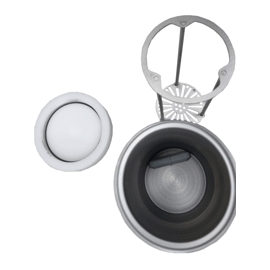
Accessory:
Calibration bath insert
incl. hanging basket, magnetic mixer rod and closing lid.
Immersion depth 190 mm
diameter 60 mm
Volume 0.7 liters
With additional calibration bath inserts, you simplify the use of the device considerably when you work with different silicone oils (due to temperature): You simply replace the insert instead of emptying and cleaning the bath each time.
Calibration liquids for LR-Cal temperature calibration baths
Basically, temperature calibration baths can be filled with three types of calibration media:
- Media that are in a liquid state at ambient temperature, e.g. oils, alcohol and water/alcohol mixtures.
- Two-phase media which become liquid at the intended temperature application range of the calibrator. These are usually mixtures of potassium and sodium salts which are powdery at ambient temperature and become liquid at temperatures between 150°C and 500°C. They are used exclusively in calibration baths specially suited for this purpose.
- Other solid substances which under certain circumstances or temperatures reach a state similar to a liquid medium, e.g. sand or aluminum powder with extremely fine grain/granularity.
DRUCK & TEMPERATUR Leitenberger GmbH does not use two-phase media for the calibration bath inserts, although their temperature range is very high.
This is because such media can be very dangerous for the user and even cause explosions.
DRUCK & TEMPERATUR Leitenberger GmbH also does not manufacture calibration bath inserts suitable for use with solid substances, e.g. aluminum powder.
This is because it is not possible to prevent 100% that corresponding powder particles get into the environment during operation of the calibrator. These media are not environmentally compatible.
The calibration media sold by DRUCK & TEMPERATUR Leitenberger GmbH for calibration bath inserts are therefore exclusively silicone oils.
Suitable calibration media for the LR-Cal LTC 150-F(-PLUS) + LTC 250-F micro baths:
| Type of calibration medium (liquid) | Possible field of application *) |
Smoke flash point **) |
|---|---|---|
| Silicone oil AC 05 | -40...+125°C | +42°C |
| Silicone oil AC 10 | -30...+160°C | +170°C |
| Silicone oil AC 20 | -20...+200°C | +240°C |
| Silicone oil AC 50 | +30...+220°C | +280°C |
| Silicone oilAC 100 | +70...+288°C | +315°C |
| Note: | Note text: |
|---|---|
| *) | The "possible range of use" describes the theoretical usability of the medium. However, the viscosity may be unfavorable for practical use as a calibration medium, especially in the lower part of the application range. |
| **) | Above the specified temperatures, the smoke ignites (CAUTION: open fire!). |
The calibration media are subject to wear (degeneration), which is greater the more often and longer they have been exposed to high temperatures. Therefore, avoid unnecessarily high temperatures over an unnecessarily long period of time.
